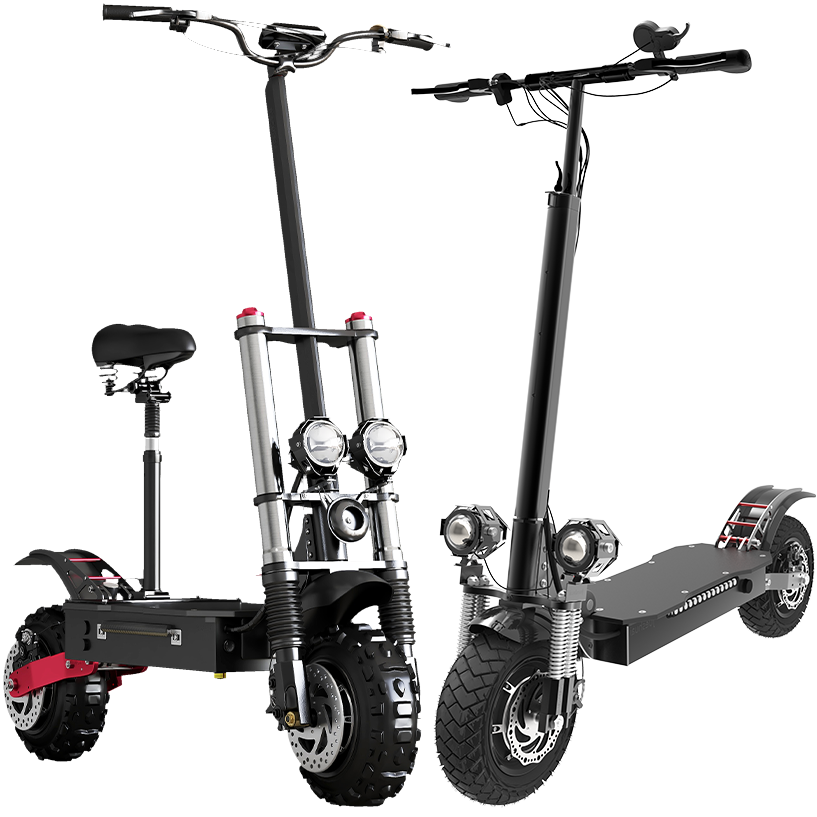Are the scooters more expensive more better?
Many buyers assume the more expensive something is, the better it must be. That’s a problem. It leads people to overspend on electric scooters that may not fit their needs at all.
A more expensive scooter might have better components, but that doesn’t always mean it’s better for you. What matters most is choosing a scooter that fits how you’ll use it, not just how much it costs.

Sometimes, a scooter is expensive not because it’s better for everyday use, but because it’s been built for extreme use cases—like off-road racing or long-range touring. These scooters often pack in advanced features that most riders will never fully use. So the key is knowing what features you truly need, and what you’re paying for.
Why are some scooters so expensive?
Scooter prices can get sky-high fast. That can be confusing.
Some scooters are expensive because they include specialized motors, high-capacity batteries, premium materials like aviation-grade aluminum, or are built for extreme speed and off-road terrain. These features drive up the cost, but aren’t necessary for everyday riders.

Let’s break it down further. Some scooters cost over $3000 because they include dual motors, hydraulic suspension, off-road tires, waterproofing, regenerative braking, and high-speed capabilities over 60 mph. These features are amazing—but also overkill if you just want something to commute five miles to work.
Here’s a comparison of what you typically get at different price ranges:
| Price Range (USD) | Common Features | Target User |
|---|---|---|
| $300–$600 | Basic commuter, 15–20 mph, 10–15 mile range | First-time users, light riders |
| $600–$1200 | Stronger motor, better brakes, longer range | Daily commuters, city riders |
| $1200–$2500 | Dual motors, suspension, higher speed | Hobbyists, weekend adventurers |
| $2500+ | Pro-grade specs, extreme speed and range | Enthusiasts, off-road professionals |
The takeaway: expensive scooters are built for extremes. If you don’t need those extremes, you don’t need to pay for them.
What is the lifespan of a scooter?
You might think spending more means your scooter lasts forever. Not really.
Most scooters have a lifespan of 2 to 4 years, depending on how often you ride, how you ride, and how well you maintain it. Spending more can improve durability, but it doesn’t guarantee longer life.

Let me give an example. One customer used their $800 commuter scooter for daily 10-mile roundtrips. With regular cleaning, brake adjustments, and timely battery charging, it lasted over three years. Another spent $2500 on a high-performance model, but used it roughly on wet roads, overcharged the battery, and it started to fail within 18 months.
Scooter lifespan mostly depends on:
Battery health (most batteries degrade after 500–800 cycles)1
Frame and material durability (aluminum lasts longer than plastic)2
Usage frequency and terrain (off-road wears parts faster)
Maintenance habits3
So yes, build quality helps—but smart care and reasonable use matter more.
How much should a scooter cost?
This is probably the most practical question.
A good scooter usually costs between $500 and $1500. That range is the sweet spot for getting solid quality, safety, and comfort—without overpaying for features you won’t use.

For my customers, I often recommend staying within this range. It offers:
- Reliable motors (350W–800W)
- Decent range (15–30 miles)
- Speeds up to 25 mph
- Disc or drum brakes
- Decent suspension or shock absorption
- Foldable, manageable weight
Here’s what you can expect at different budget levels:
| Budget (USD) | What You Get | Should You Buy? |
|---|---|---|
| <$500 | Very basic, often underpowered | Only for short trips and rare use |
| $500–$800 | Good beginner or light commuter scooter | Best for first-time buyers |
| $800–$1500 | Stronger performance, reliable quality | Ideal balance for most users |
| $1500+ | Advanced features, more fun but costly | Only if you’ll use those features |
Spending more than $1500 only makes sense if you ride a lot, need high speeds, or demand special features. Otherwise, it’s often unnecessary.
How do I choose a good scooter?
Buying a scooter can be confusing with so many models and prices.
To choose a good scooter, focus on your real needs: how far you’ll ride, where you’ll ride, how fast you want to go, and how much weight you can carry or lift. Then pick a model with reliable components in your budget range.

I always tell buyers: don’t be distracted by speed and power alone. Here are the key points you should check:
Key Decision Factors
| Need | What to Look For |
|---|---|
| Commuting short distance | 15-20 mph speed, 10–15 mile range |
| Frequent rides | 500W+ motor, dual brakes, better tires |
| Hilly area | Higher torque motor (600W or dual motor) |
| Portability | Under 40 lbs, foldable design |
| Rainy weather | IP54+ waterproof rating |
| Heavy riders | 220 lbs+ max load, wide deck |
One last tip: always check after-sales service. Make sure the seller offers local warehouse shipping and local repair service. At JUESHUAI, we ship from U.S. warehouses with tax and shipping included, and we offer repair support for our customers who buy in bulk or regularly.
Conclusion
More expensive doesn’t always mean better. Choose a scooter that fits your riding needs, stays within your budget, and comes with real support you can count on.
Table of Contain
-
Understanding battery health and lifespan can help you make informed decisions about battery maintenance and replacement. ↩
-
Exploring the durability of materials can guide you in choosing the right equipment for longevity and performance. ↩
-
Learning about effective maintenance habits can significantly extend the life of your equipment, saving you money in the long run. ↩






